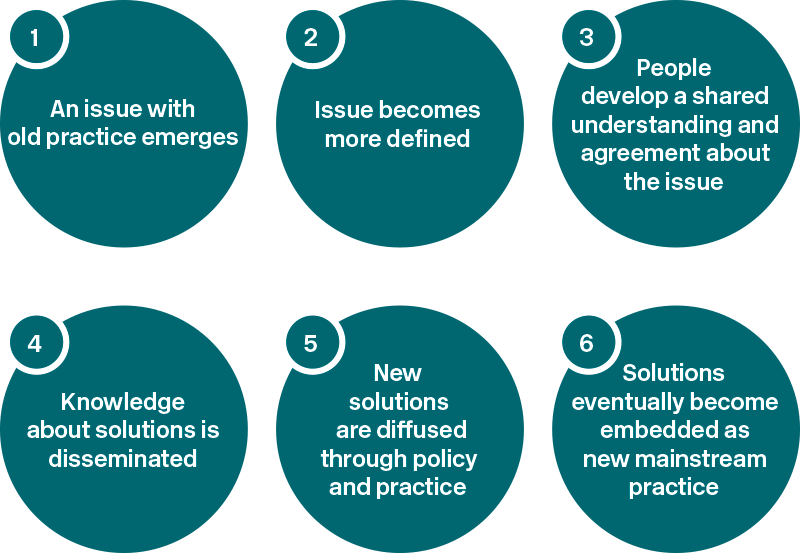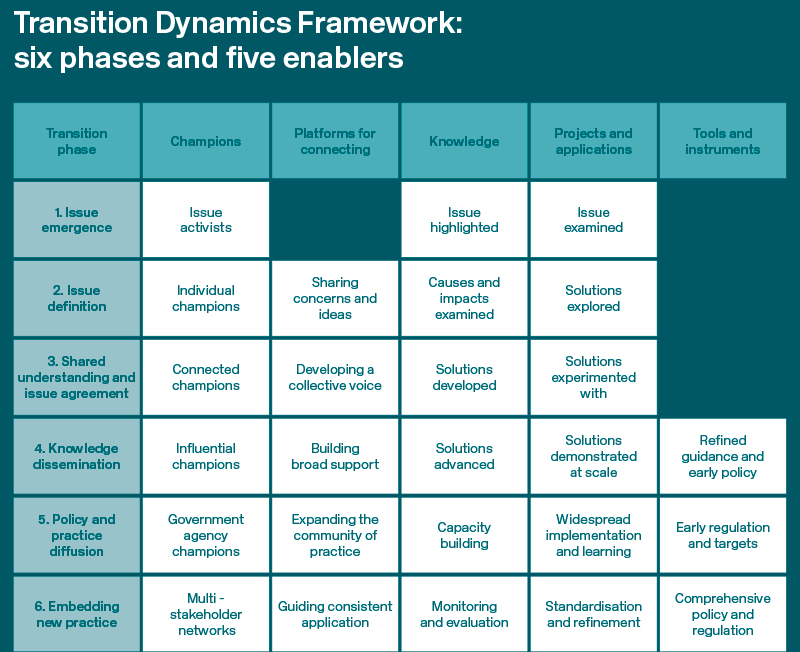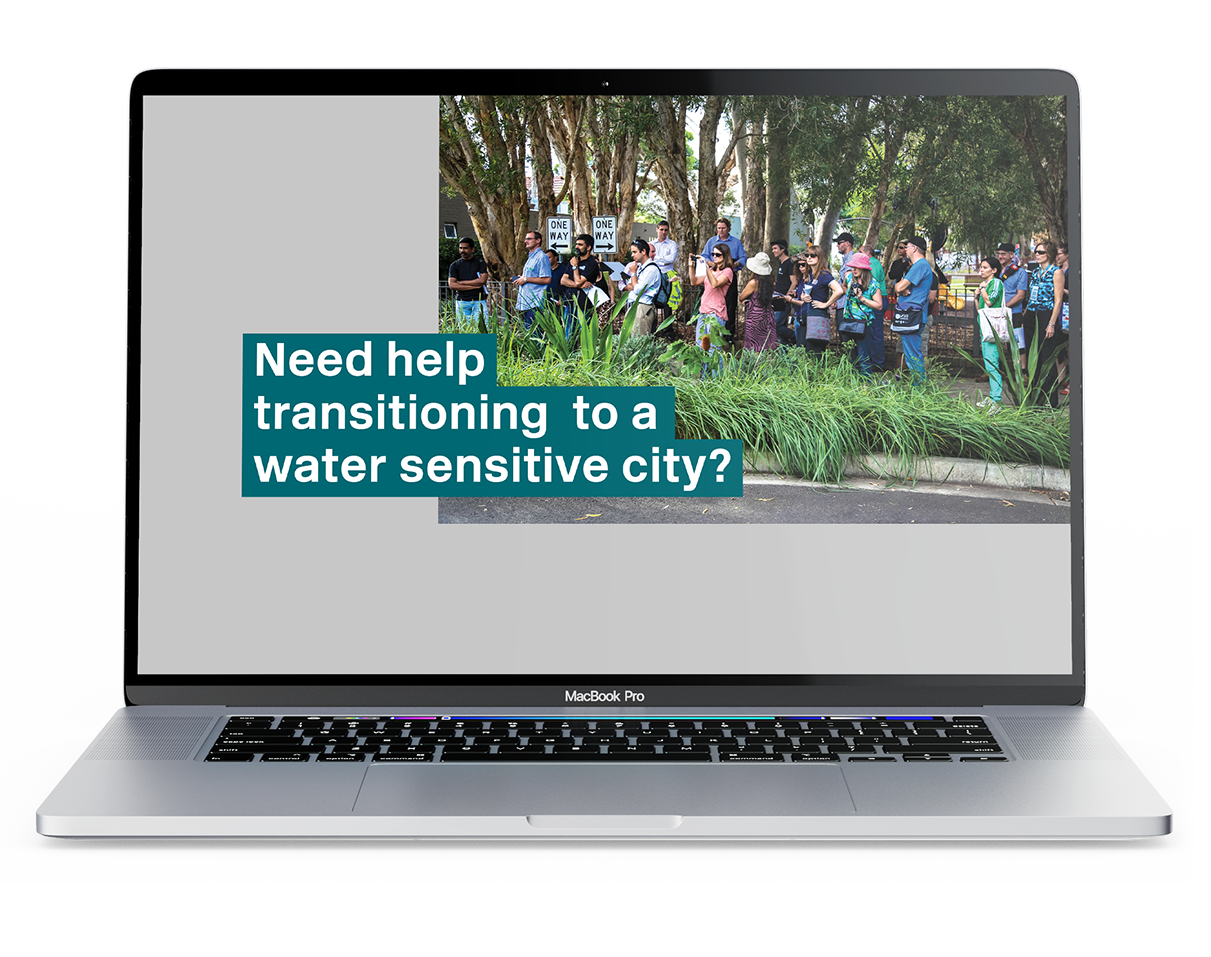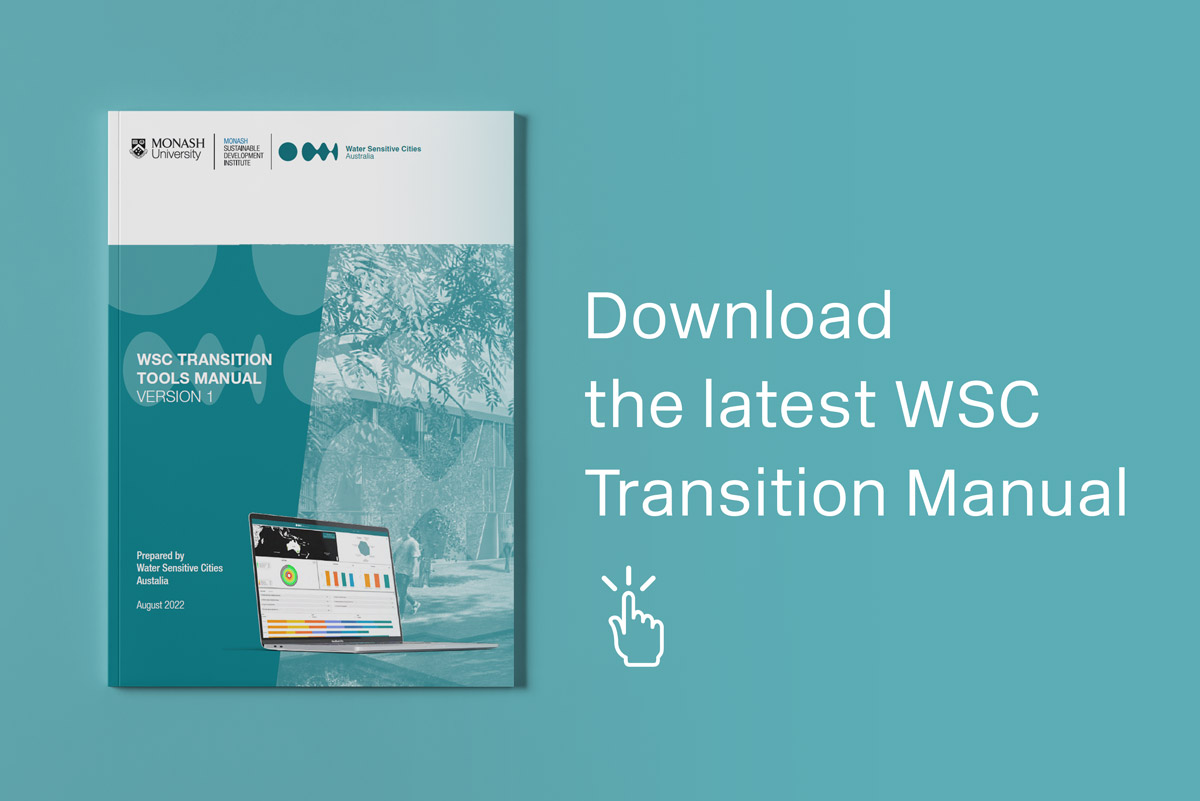Achieve your water sensitive cities vision
The Transition Dynamics Framework can help you achieve your water sensitive cities vision.
The framework can help you:
- understand your city’s current position in its transition to a water sensitive future
- identify priority strategies for advancing the transition
- set the framework for monitoring progress over time.
Interested in applying the Transition Dynamics Framework?
Email us at admin@crcwsc.org.au
Where to find more information
You’ll find more information about benchmarking your city on the following pages:
Useful resources
The framework maps the phases for transitioning to a water sensitive city
Transformative changes are never easy. Realising new practice on the ground requires significant changes across the structures, cultures and practices of urban and water system planning, design, management, engagement and decision making.
Our research and experience show that water sensitive transitions unfold over six phases.


The framework analyses your city’s enabling environment for driving change
The Transition Dynamics Framework sets out five types of enabling factors that help drive progress through the six phases of change:
- Champions—individual people, organisations and networks who are involved in or engaged with a change in practice (ideally, the number grows over time and represents a greater cross-section of stakeholders)
- Platforms for connecting—formalised or semi-formalised organisations, structures and processes that facilitate collaborations across science, policy and industry spheres (usually their primary functions change over the course of a transition)
- Knowledge—scientific understanding of the problem and potential solutions, along with contextualised knowledge informed by local research activities
- Projects and applications—experiments, demonstrations and focus projects that test the viability of new technologies or approaches
- Practical and administrative tools and instruments—such as legislative and regulatory instruments, market mechanisms, models and best practice guidelines to help embed the new practice.

